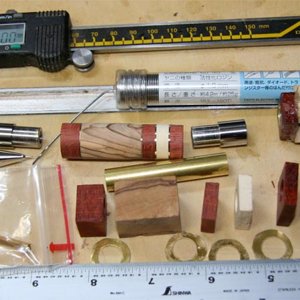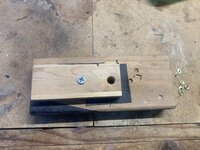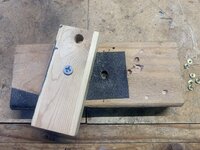Yellow River Woodturning
Member
I've been looking around on the forums for how to do this, but I haven't found a definitive answer. When you make a segmented blank with a metal band in it, do you glue the segments together and then drill, or do you drill the segments separately and then glue them together? Also, what kind of drill bit do you use for thin metal stock (brass or aluminum), and will a brad point work? Finally, if the metal strip is at an angle, how do you drill it?



